Triumph Bonneville Speedmaster Review: First Ride
The Triumph Bonneville Speedmaster has been updated for 2018, dubbed as the practical version of the Bobber, the Speedmaster has a lot riding for it. We rode this retro cruiser along the California coastline, to find out what if it's any better.

Believe it or not, in the land of ‘Baywatch,’ a Triumph Bonneville managed to attract more attention than the bikini-clad women jogging along the Pacific coastline. Here’s why…
Triumph Motorcycles has decided to expand its successful Bonneville range with the addition of the 2018 Speedmaster. So we travelled 31 hours, including flight and transit times, to California to find out what the all-new Bonneville Speedmaster is all about.
Based on the gorgeous Bobber, Triumph’s fastest selling bike in history, the Speedmaster is powered by the same 76bhp 1,200cc High Torque parallel-twin heart. This refined engine offers 10% more torque at 4,000rpm than the standard Bonneville and 42% more torque than the previous-generation Speedmaster. The beauty of this torquey parallel-twin engine is that it allows you to be an apex predator in the corners, while also providing plenty of punch at slow speeds. And, thanks to the tall gearing, you don’t need to keep shifting gears either.
As mentioned earlier, the Bobber is one of Triumph’s best sellers, but its single seat and lack of luggage space limits its potential. And it was this limiting aspect that lead to the launch of the Speedmaster. Dubbed a practical version of the Bobber, the Speedmaster has the same class leading chassis and engine performance as the Bobber – but without its limitations. And for this reason, the Speedmaster will definitely appeal to a lot more riders. After all, many still prefer two-seater motorcycles – especially in the Indian market, where most riders would admire the Bobber, but eventually would shy away from signing on the dotted line.
From retro to modern
We rode this retro cruiser along the California coastline, with the waves kissing the beaches on one side and a row of cafes on the other. Apart from hitting the wide Pacific Coast Highway in Southern California, we also rode the Speedmaster on narrow winding roads neatly tucked away in the hills. I got my hands on the beautiful dual-coloured Fusion White and Phantom Black, sporting a timeless British heritage design with minimal bodywork. Mesmerised, I took a couple of minutes to admire the simple, yet classy, full HD round headlight with DRLs – as Triumph brings back the Nacelle design from the 50’s and 60’s. Making the motorcycle more practical, the Speedmaster boasts of a 12-litre dual coloured sculpted Bonneville tank – bigger than the Bobber’s 9-litre one. It retains a simple LCD instrument cluster – an odometer, rev counter, gear indicator, range-to-empty gauge, a fuel level indicator, clock, two trip meters and a service indicator. Sticking to the retro theme, the Speedmaster comes with stylish 16-inch, 32 spoke wire wheels and twin chrome exhausts.
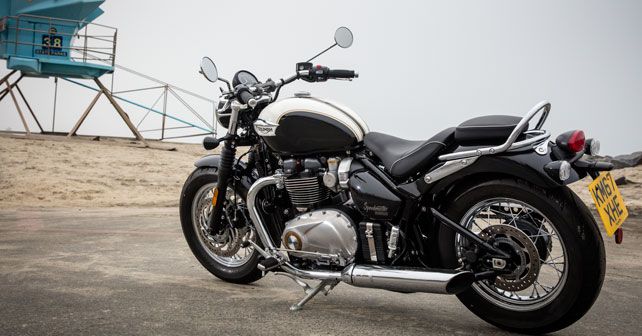
If you picture the original Bobber, it would be quite hard to imagine Triumph accommodating two seats on that platform. But thanks to some clever design, Triumph uses a sub-frame for the two seats. It has a mono-shock suspension with a travel of 73mm, which is also pre-load adjustable. Kudos to Triumph for designing the Speedmaster while retaining the classic hard-tail look.
The Speedmaster is all about laid-back riding, and that’s the first thing I noticed when I sat on the rider’s seat – which boasts of a low seat height of 705mm. This is a boon for us Indian riders, as we aren’t the tallest people in the world. Also, the ride stance is more like a cruiser – with swept back ‘beach bars’ and forward-mounted foot pegs.
Responsive and refined
It was time to find out how this new Bonneville behaved on the road. I press started the ignition and 1,200cc engine came to life with a muffled hum. As was expected from this High Torque engine, it responded instantly with a slight twist of the throttle. As we eased our way out of San Diego city, adhering to the speed limit, the Speedmaster showed a lot of spunk at a low power range of 1,800 to 2,000rpm, making it very easy to ride in slow traffic conditions. This is all thanks to the flawless ride-by-wire throttle. As smooth as the engine is, it’s mated to a precise and an effortless 6-speed transmission. Another reason why it’s so easy to ride the Speedmaster is its torque-assist clutch that allows you to use the lever with just a single finger – making the overall experience of riding this cruiser an overall relaxed affair.
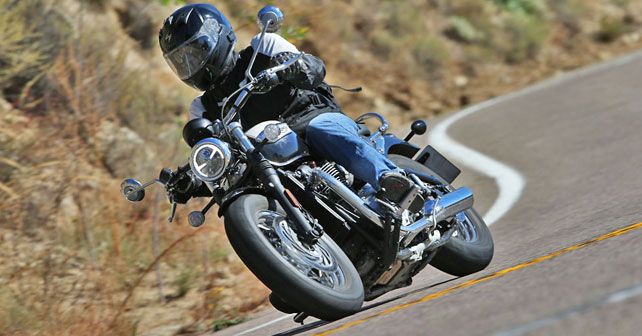
Once we hit the highway, I opened the throttle and the Speedmaster showcased its versatile nature as it picked up speed in a smooth and linear fashion – crossing the three-digit mark in a jiffy. Also, I could hardly feel the chassis vibrating. The Speedmaster also comes with cruise control as standard equipment, and the highway was the ideal place for us to play around with this feature. It gets activated on or above third gear – once you’re cruising over 70km/h. The beauty of this feature is that it’s very simple to use. Press it once and the system comes alive. Press it again and the cruise control is switched on. You can adjust the speed, and when you wish to deactivate it, simply press the brakes or clutch or twist the throttle. Like the Bobber, it also has two riding modes – Road and Rain – and is equipped with ABS and traction control.
Rock steady
Coming back to the ride, it was very stable at high speeds, as expected. But it was when we entered the twisty roads of Mount Palomar that the Speedmaster showed its true character. We were able to flick it in corners, and it felt light, yet stable – giving the rider a lot of confidence. I must add, though, that the front foot pegs kept scraping – but then it is a cruiser. The result of this, however, is a slight disconnect between the eager engine, the chassis and the party-pooper foot pegs.
The Speedmaster, like the Bobber Black, comes with twin 310mm disc brakes up front, which respond well and provide sufficient bite when needed.
Coming to ride quality, I can’t really comment because we were riding the Speedmaster on flawless roads. Triumph has changed the setup of the front 41mm KYB forks – it now come with a dual-rate spring to offer a more cushioned ride. Adjustments to the rear KYB monoshock have also been made to ensure the pillion’s ride quality is not hampered. Keeping practicality in mind, Triumph has added a sub-frame to accommodate a pillion or luggage.
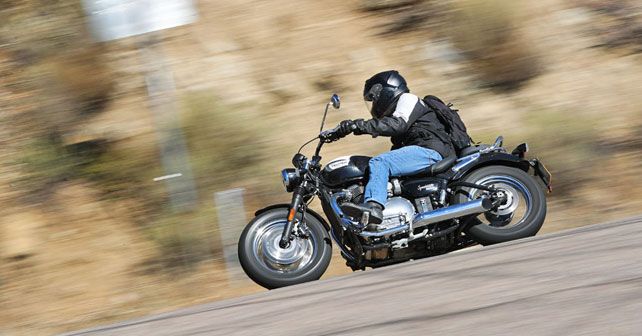
Triumph also provides optional customised kits for the Speedmaster to make it truly your own. The iconic British motorcycle manufacturer calls them ‘inspirational kits.’ The Highway kit is all about touring, as it comes with a pannier set, extra comfortable seat with a rear backrest and a windshield. The Maverick fit, on the other hand, is a more blacked-out street kit with a single seat setup and flat raked out bars.
Another winner on its hands?
So, is the new Speedmaster a practical version of the Bobber? I would say it’s a mature and a versatile retro cruiser because of its easy-going riding position and extremely comfortable seat. When it comes to practicality and safety, it has a larger 12-litre tank and twin front disc brakes, apart from ABS and traction control. The 1,200cc High Torque is a gem of an engine, as it provides quite a punch at low rpm and goes all-free revving on the highway. The Bobber chassis offers fluid steering feel and seems to be at ease when negotiating tight turns. With its simple retro design, class-leading refinement and build quality, the Speedmaster is a charmer that will make people go weak in the knees. And the good news is that it’s going to make its debut in India soon. But, will it give its competition some sleepless nights? Going by the success of the Bonneville range, the Speedmaster certainly ought to make its rivals nervous.
Engine: 1,197cc, SOHC, Liquid Cooled
Transmission: 6-Speed
Power: 76 bhp @ 6100rpm
Torque: 105 Nm @ 4000rpm
X-Factor: The Speedmaster brings back the 50s retro cruiser design, with its sweptback beach bars. Not only does it look the business, but it goes pretty well too!
| Pros • Powerful and versatile motor • Comfortable riding position | Cons • Front pegs positioned too low |
Triumph Bonneville Speedmaster [2018-2019]


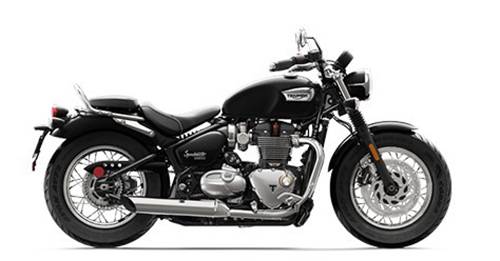
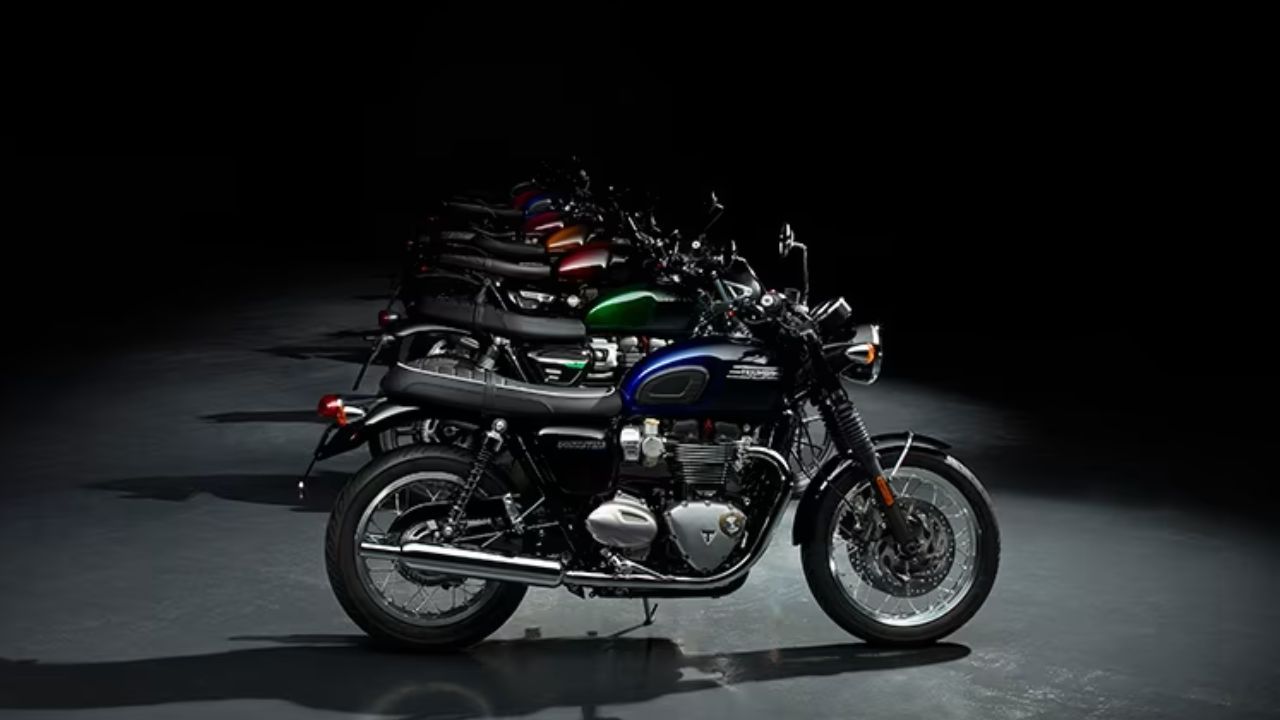
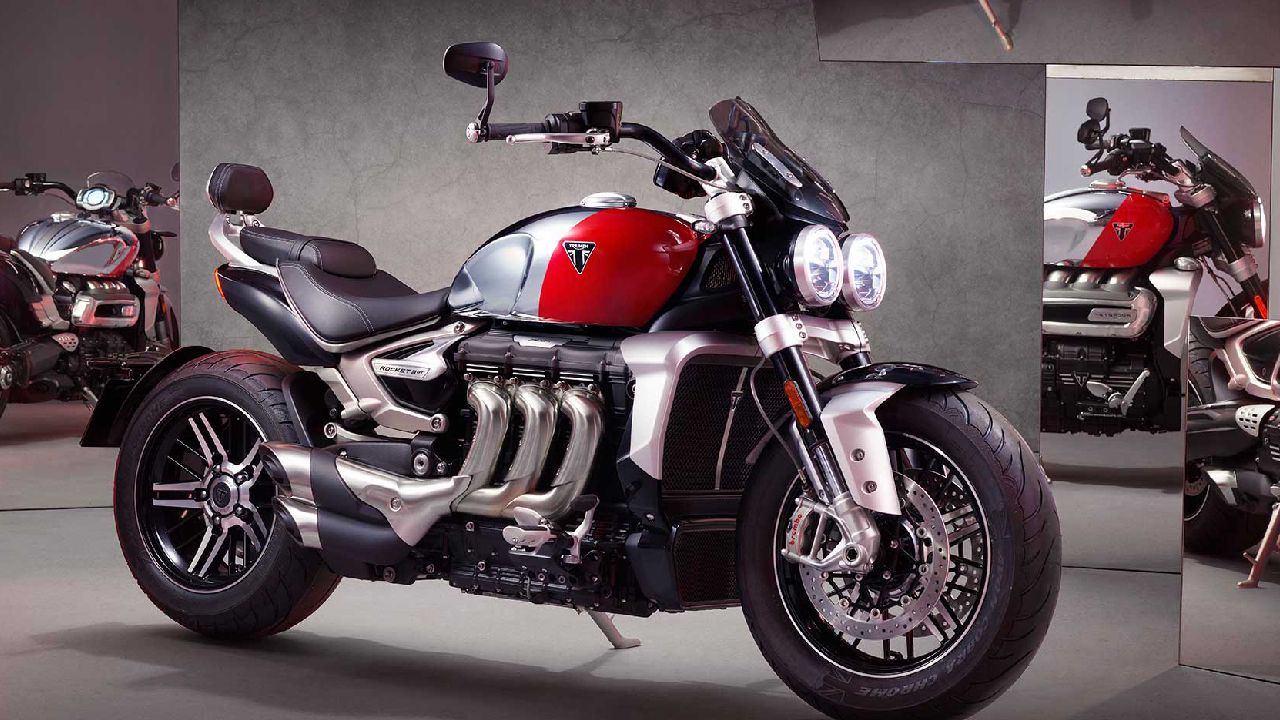


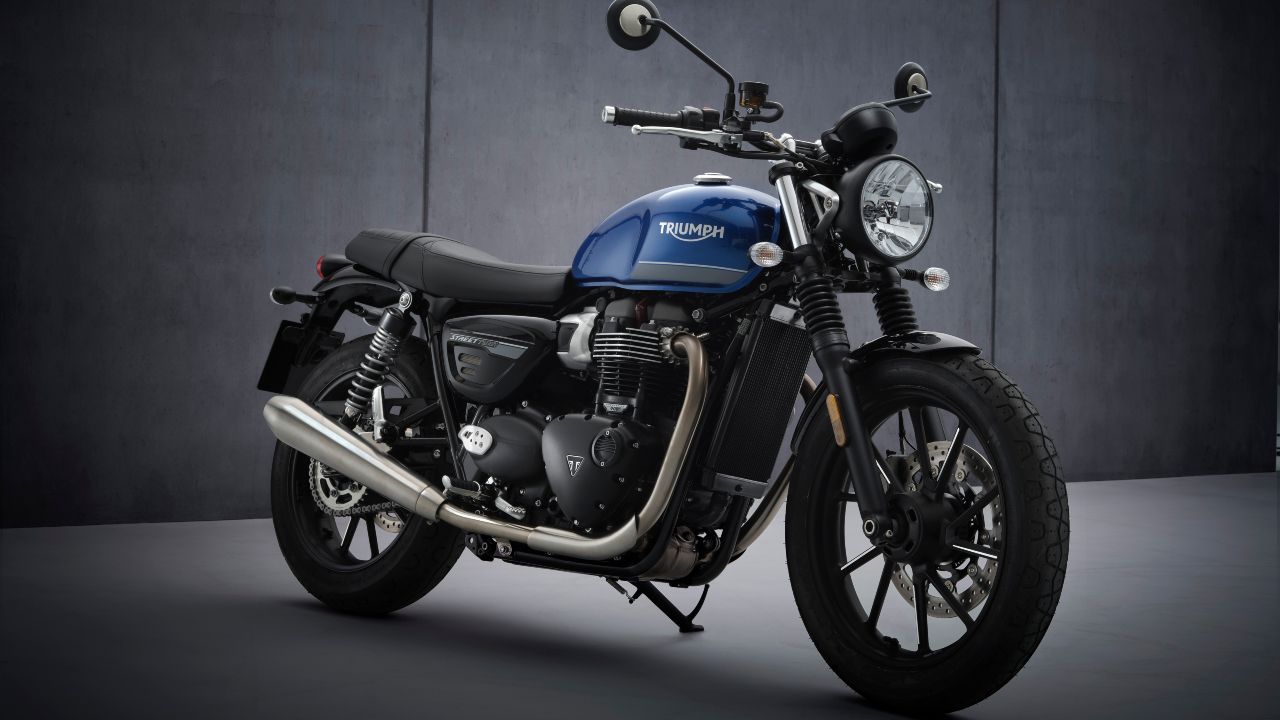
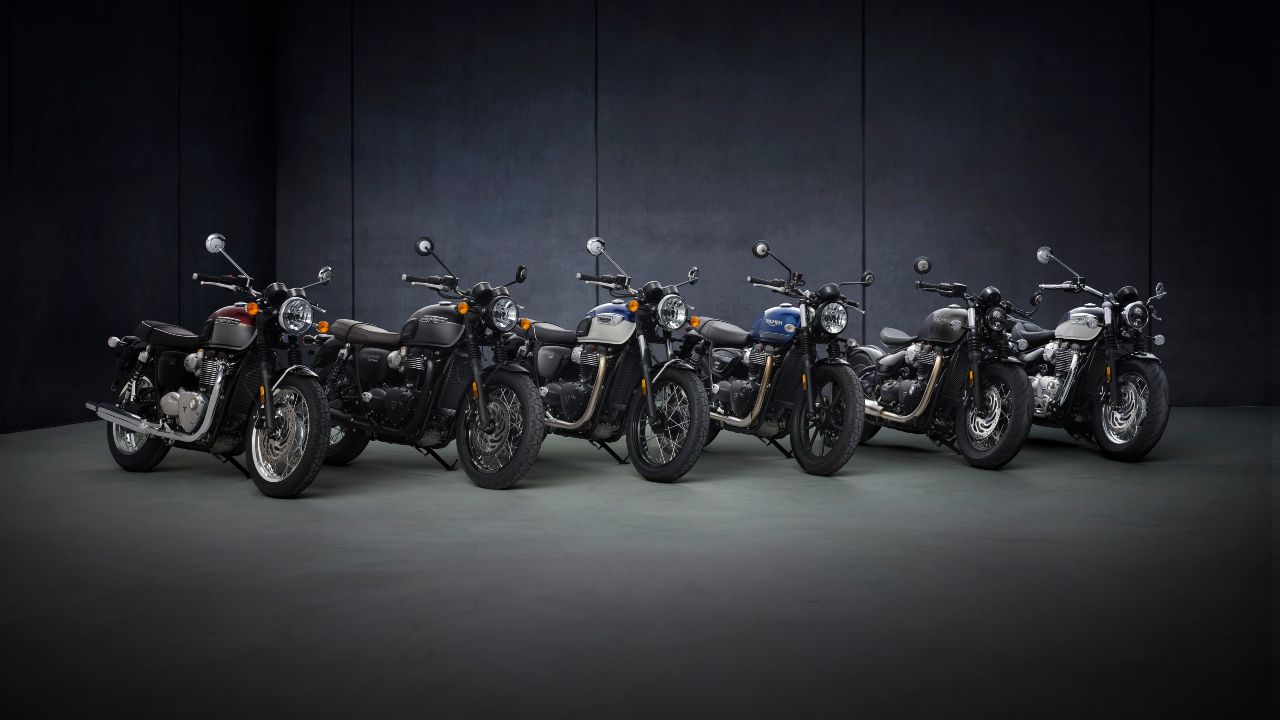
Write your Comment on